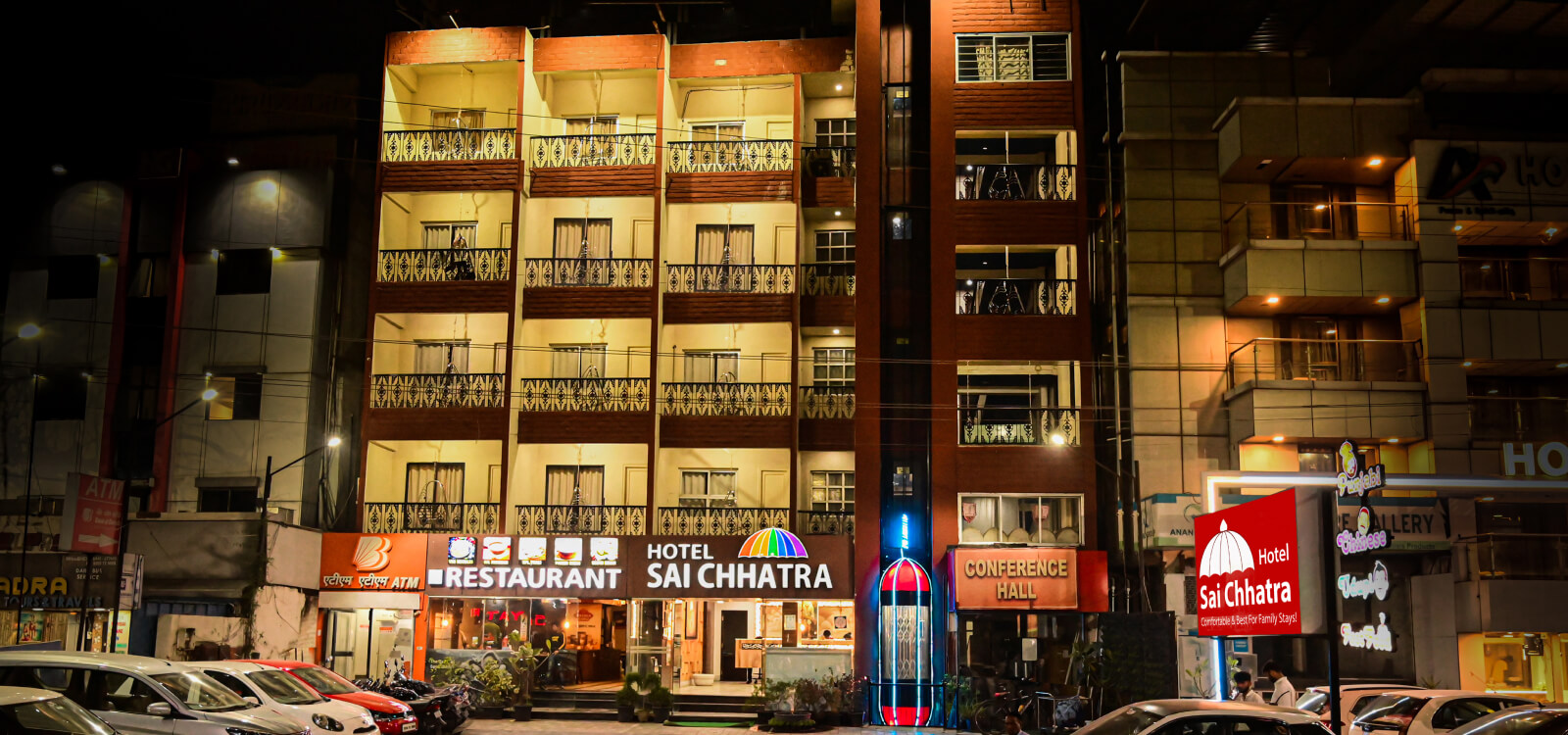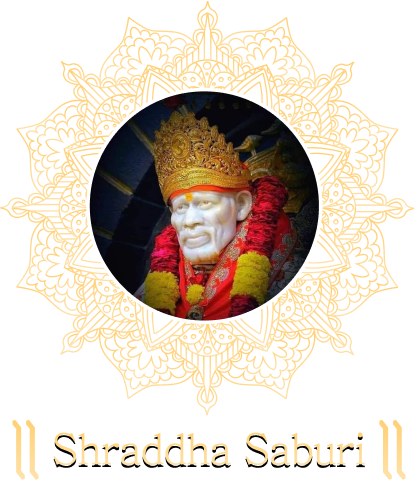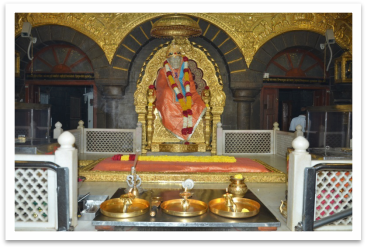
SAMADHI MANDIR
Baba has promised, “I shall be active and vigorous even from the tomb,” and it is perhaps in the Mandir that we can most fully experience the phenomenon of Sai Baba and the remarkable way he has touched the hearts and lives of millions of people from all over the globe. Baba’s omniscient presence is felt when one has Baba’s glance, when one sits at Baba’s feet.

DWARKAMAI
To the devotees of Sai Baba, Dwarkamai is one of the treasures of Shirdi. The spirit of tolerance, acceptance and welcome for all is very much alive. Baba has said that merely going inside the mosque will confer blessings, and the experiences of devotees confirm this. Sai Baba respected all religions and creeds, and all had free access to the mosque. It is typically unique of Sai Baba that he regarded a place of worship – the mosque – as a mother. He once told a visitor, “Dwarkamai is this very mosque. She makes those who ascend her steps fearless. This masjidmai is very kind. Those who come here reach their goal!”
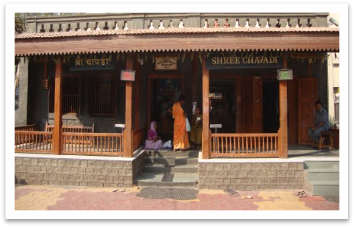
CHAVDI
Though apparently and formally Baba used to go to the Chavadi. In his super conscious state he was never asleep and used to tell his devotees that in his everlasting awareness (consciousness) he will always protect his devotees who were asleep at night
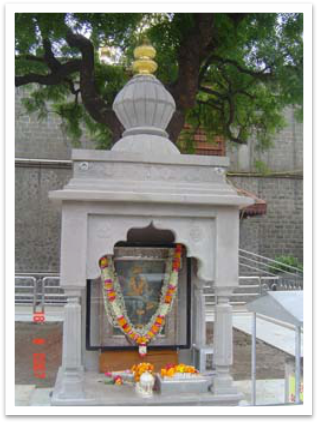
GURUSTHAN
Gurusthan means “place of the Guru”. It is both where Baba spent most of his time when he first came to Shirdi, and also where, according to Baba, the tomb of his own Guru is located by the neem tree. Gurusthan is therefore one of the most important places in Shirdi.. From underneath the NEEM tree there is an underground tunnel or passage leading to the place of Dwarkamai as told by an old lady.
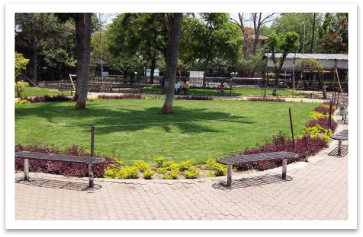
LENDI GARDEN
At the end of 1999, Lendi Gardens was radically relandscaped, and the previously paved and tree-lined area turned into a lawn with waterfall and flower beds. Lendi is significant as a place which Baba used to visit every day. It contains some tombs, a shrine, and most importantly the perpetually burning lamp lit by Baba and placed between the two trees he planted. A few months before Baba’s mahasamadhi the land was bought by a Bombay devotee, M. W. Pradhan, and later presented to the Sansthan.
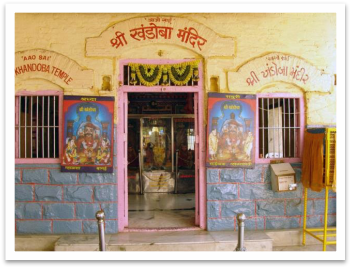
KHANDOBA TEMPLE
It is said that a young man, dressed in the Muslim fashion in a Kafni (Robe) arrived in a bullock cart as the guest of the wedding party. As the party approached the temple, the temple priest, Mhalsapati, on seeing the fakir, called out, “Ya, Sai!” (“Welcome, Sai!”) and the name remained ever after (Sai is a Persian word meaning “saint” or ‘holy’, and Baba means “father”). In this way, it was Mhalsapati who was responsible for Baba’s name, which has become the sacred mantra of thousands of his devotees.
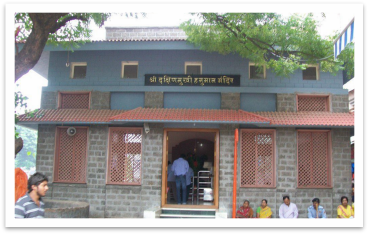
SHRI HANUMAN TEMPLE
Down the lane that runs between Dwarkamai and the Chavadi is the Hanuman Mandir, one of the oldest temples in Shirdi. Marked by a pair of trees enclosed by a circular railing, it is also known as the Maruti Mandir. Unusually, the temple faces south and there are two Hanuman images here, side by side. You may also notice a few weights and dumbbells in the corner. Because Hanuman is considered strong and vigorous and is the patron deity of wrestlers, young men find this an auspicious place in which to exercise.

NANDA DEEP
This is the main feature of Lendi: the perpetually burning lamp between two trees that Baba is said to have planted, a neem and a bodhi. As the trees were touched by Baba and planted close to where he sat and the lamp that he lit, the area serves as a focus for worship, including pradakshina.
Between the neem tree and the bodhi tree is Nanda Deep ("lamp of bliss", also known as Akhanda Deep - "perpetually burning lamp"), the lamp that was originally lit by Baba. Later, Baba instructed Abdul Baba to see that it was kept burning.
The lamp as we see it now was built by the Sansthan and the area has been paved. In Baba's time the lamp was sunk into a small pit and protected from the wind by some zinc sheets and later some pieces of cloth, making a kind of tent with the lamp in the centre.
Nanda Deep was a place where Baba liked to sit in contemplation. Abdul Baba says that Baba would sit on the ground close to the lamp, but not in a place from where he could actually see the lamp. It seems, therefore, that Baba was not using this lamp for its light or flame (since it was covered). Just as the lamp itself was concealed, exactly what Baba was doing here is also veiled from us.
Just behind the new outdoor theatre is a row of three small temples. They are dedicated to Ganesh, Shani (Saturn) and Mahadev (Shiva). Baba had them repaired and his local devotee, Tatya Kote Patil, was fond of offering lamps here. The shrines were rebuilt and enlarged in 1999 as part of the re-modeling of the Temple Complex.
The small samadhi of the tiger, commemorated by a statue in Dwarkamai and said to have received mukti from Baba, is a few feet from the Mahadev shrine.


